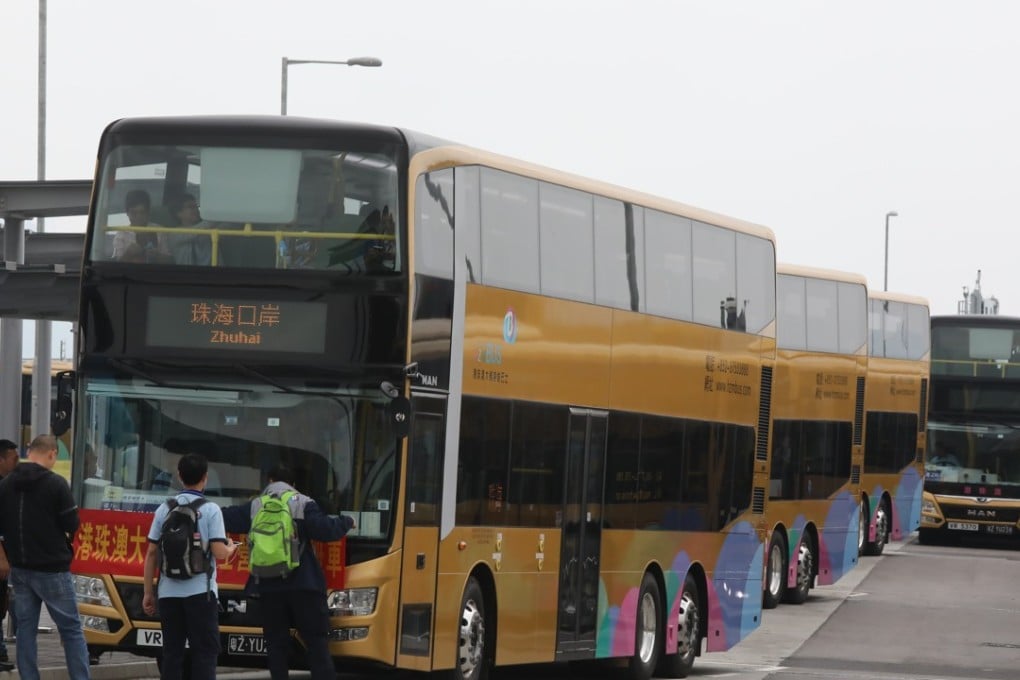Bus operators for Hong Kong-Zhuhai-Macau Bridge suggest better passenger control and logistics to ease traffic pressure
- After long queues mark opening weekend of mega project, cross-border coach firms say relaxed rules for driving licences and tighter management of queues can help

Cross-border transport service providers on Tuesday floated suggestions for better passenger control and logistics to ease traffic pressure at the Hong Kong-Zhuhai-Macau Bridge, days after thousands of passengers were stranded at port facilities for hours.
Relaxed regulations for driving licenses and tighter management of queues were urged to ensure smooth operation for the 24-hour shuttle bus service between the three cities’ border checkpoints.
Noting 68,000 and 78,000 people crossed the border using the bridge on Saturday and Sunday respectively – twice the figures recorded on weekdays – Cheung called the long waits “undesirable”.
“That situation was certainly not satisfactory.”
“We hope the operators can deploy more buses to tackle the situation if warranted,” he said.